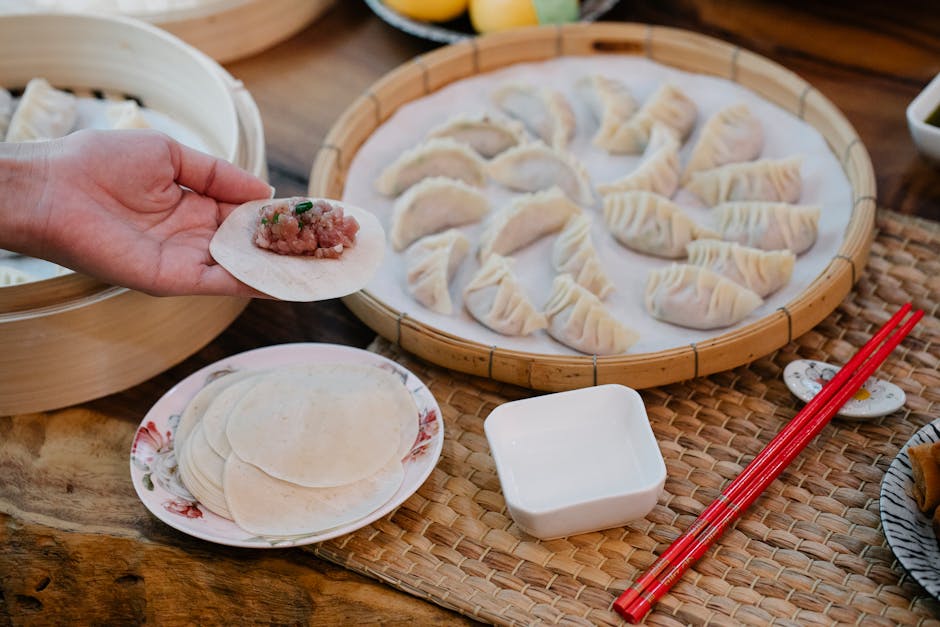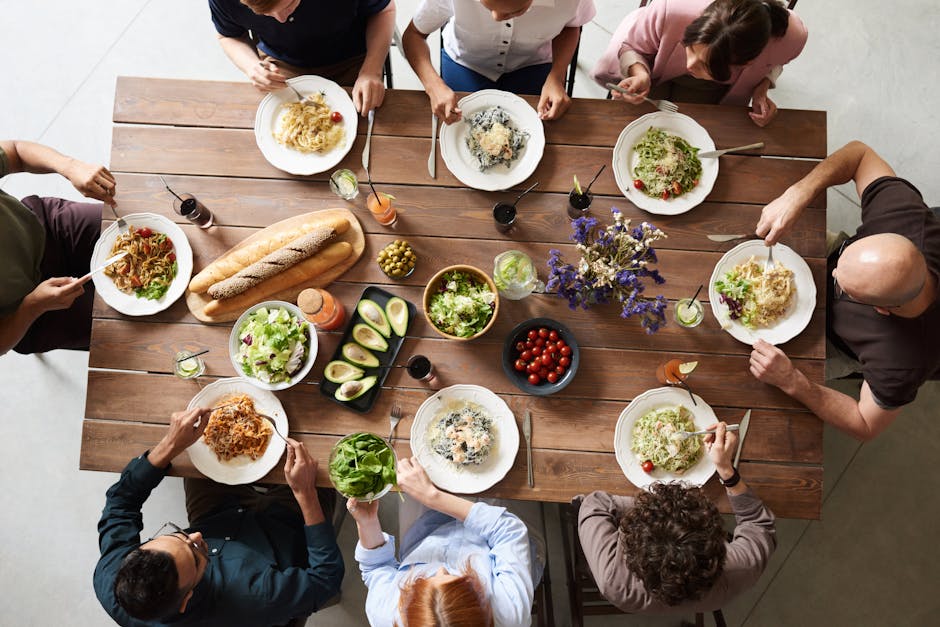Rediscover Forgotten Culinary Treasures: Cook Like Your Ancestors
Have you ever felt the stirrings of nostalgia when you bite into a dish that reminds you of your grandparents’ kitchen? Imagine capturing the essence of those memories and weaving them into your cooking today. In this culinary journey, we're diving into the rich heritage of food by exploring forgotten recipes from our ancestors' gardens. We’ll uncover heirloom ingredients and traditional cooking methods that have faded away, not just to dine but to connect us deeper with our roots. So grab your apron and let’s embark on this flavorful quest to revive the past while nourishing a sustainable future.
Understanding the Roots of Forgotten Recipes

Cooking is more than just a necessity; it is a ritual steeped in culture, familial love, and nostalgia. Many of the recipes that our ancestors once used have been overshadowed by modern convenience and fast food culture. However, by looking back at our history, we can rediscover recipes that highlight the simplicity and wholesome nature of food that was seasonal and locally sourced. Our foremothers and forefathers utilized heirloom ingredients they cultivated in their gardens, keeping flavor and health at the forefront of their meals.
Heirloom ingredients—be they vegetables, grains, or fruits—represent a living connection to our ancestors. For example, some heirloom tomatoes, like the Brandywine or Cherokee Purple, were cultivated for their unique flavors long before mass-produced varieties took over our shelves. By growing and cooking with these foods, we don't just replicate old recipes; we also engage with the sources of our food, promoting sustainability and a healthier planet.
For further exploration on the relationship between ancient grains and modern cooking, check out this insightful article about embracing ancient grains.
Researching Your Ancestors' Culinary Heritage

The first step in reviving these forgotten recipes is to research your culinary heritage. Start by reaching out to family members—parents, grandparents, and even distant relatives. Speak to them about their cooking traditions, special family gatherings, or favorite dishes. Document the stories they share, as these can provide a rich narrative context to the recipes themselves. In today's digital age, resources like genealogy websites can help connect you with historical food practices tailored to your ancestry.
Local libraries, historical societies, and even vintage cookbooks from your locality can also offer valuable insights. Many regions boast historical societies that preserve recipes that have been passed down through generations.
Consider exploring the online repositories available, such as the Historic Foodways association, which showcases various traditional recipes and cooking techniques.
Growing Heirloom Varieties at Home

To truly immerse yourself in the ‘culinary time machine,’ consider starting your own garden. Growing heirloom varieties provides an authentic connection to the food your ancestors may have cooked with. Not only does this encourage sustainability, but it also brings the essence of the past directly to your table.
Begin by selecting heirloom seeds from local suppliers or online stores specializing in heirloom varieties. heirloom seeds can often be found and ordered through local farmers’ markets or gardening groups. Common heirloom plants include tomatoes, beans, peppers, and cucumbers.
Tips for Growing Your Heirloom Garden:

-
Choose Your Spot: Pick a location with ample sunlight and well-drained soil. Depending on your space, you might want to create raised beds for better drainage and soil control.
-
Start Small: Initially planting a few varieties can make the endeavor less overwhelming. Focus on plants that are known to thrive in your local climate.
-
Embrace Companion Planting: Pairing plants like basil with tomatoes not only enhances flavor but can also ward off pests.
-
Learn the Right Techniques: Traditional methods, such as crop rotation and using organic fertilizers, help improve soil health and maintain sustainable growth.
-
Document Your Journey: Keeping a journal about your gardening experiences—what thrives, what doesn’t, weather changes, and other observations—can help you refine your practices in the future.
With your own heirloom garden in place, the next step is to transform these precious ingredients into meals that tell a story.
Cooking with Heirloom Ingredients: A Flavorful Exploration

Engaging with your garden bounty allows you to explore ancestral recipes creatively. Here’s where you can blend history with modern techniques, giving traditional meals a contemporary twist.
Try These Delightful Recipes:

-
Rustic Heirloom Tomato Pie: Pair a flaky pastry crust with a medley of heirloom tomatoes, fresh basil, and sharp cheddar. The vibrant colors and flavors make this dish beautiful for gatherings.
-
Grandma’s Seasonal Ratatouille: An easy way to utilize multiple heirloom vegetables! Use eggplants, zucchini, bell peppers, and tomatoes sautéed in olive oil with fresh herbs for a traditional summer dish.
-
Classic Cornbread with Heirloom Cornmeal: This simple recipe utilizes heirloom cornmeal from varieties like the Blue Hopi or Golden Bantam. The distinct flavors will transport you back to simpler times.
-
Beet & Walnut Salad: Incorporating heirloom beets gives this salad an earthy flavor. Roast the beets and toss them with walnuts, greens, and a simple vinaigrette for a hearty, healthy dish.
By incorporating these ingredients and recipes into your cooking, you'll not only experience the flavors of yore but also savor a deeper appreciation for the land and practices they symbolize.
For additional tips on sensory cooking that adds texture and aroma to your meals, check out this guide on sensory cooking.
Engaging with the Culinary Community: Share Your Discoveries

As you delve into cooking with these heritage recipes, don’t hesitate to share your culinary journey on social media or local community platforms. Food bloggers and cooking enthusiasts alike enjoy exploring and exchanging heirloom recipes, culinary techniques, and gardening tips.
Joining online forums or social media communities can facilitate connections with those on similar culinary quests. Platforms like Facebook or Instagram have vibrant groups dedicated to traditional cooking and heirloom gardening. This not only helps broaden your recipe repertoire but allows for shared learning experiences and inspiration.
You might also consider hosting a "heritage feast" where friends and family can bring dishes inspired by their own family recipes. This communal cooking experience can foster deeper connections through shared storytelling and an appreciation of culinary traditions.
Creating a Mindful Cooking Practice

Cooking can be more than just a routine; it can be a time for mindfulness and connection. Channel the rhythms of the seasons and your emotions into your cooking by considering the elements around you. Think about the origins of the ingredients, their textures, and flavors, and allow these aspects to inspire your culinary creativity.
By practicing mindfulness in the kitchen—focused breathing, paying attention to aromas, engaging your senses—you can elevate ordinary meals into extraordinary experiences. Explore the concept by learning more about cooking with intention in our guide on mindful meals.
Final Thoughts
Reviving forgotten ancestral recipes does more than bring flavor back to our tables; it connects us to our roots and promotes sustainable, responsible cooking practices. Each bowl of heirloom soup, each slice of tomato pie, holds the history of our families and the land they once tended to.
So, let’s step into this culinary time machine together, reconnecting with heritage ingredients, sustainable practices, and traditions that are rich with flavor and history. Your ancestors’ culinary delights await—foster those memories, grow those seeds, and tell your family's story, one plate at a time.
Your journey into the past does not have an end; it’s a lifelong exploration. Begin today and rekindle that connection to the flavors that history has prepared for us to savor.



